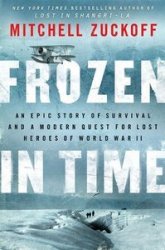Advertising encouraged Americans to buy all kinds of new products in the increasingly materialistic consumer society of the post-World War II years.
Advertising, which came of age in the 1920s, changed significantly with the advent of television in the 1950s. New ads now appeared not just in newspapers and on the radio but on television screens as well. Advertising agencies jumped at the opportunity to use audio and visual components together in creative combinations. Many companies rushed to find ad agencies that specialized in TV promotions. In 1957, Variety magazine reported that, during a typical week, an average viewer encountered 420 commercials, totaling five hours, eight minutes. By year’s end, ad expenditures in radio and TV crossed the $2 billion mark.
In the 1950s, advertising agencies concentrated on simple themes, with slogans that were repeated over and over again. One candy manufacturer told consumers that “M&M’s melt in your mouth, not in your hands,” while a toothpaste company proclaimed “Colgate cleans your breath while it cleans your teeth.” The theory that a consumer could only retain one strong claim from an ad lay behind the simplistic ads of the 1950s. Rather than being original, advertisements were all alike in their format and style.
The 1950s also saw a rise in consumerism with the end of the war, and advertising promoted a host of new goods and products. Mass housing was developed, as were supermarkets and shopping malls. There was a rise in recreation, where families took yearly vacations and generally went outside the home for entertainment to events such as baseball games and the theater. Families also became increasingly materialistic, buying up new products such as dishwashers, blenders, and freezers. Ad agencies played to middle-class families during such popular television shows as I Love Lucy and Leave It to Beaver. Ad companies knew these were popular sitcoms, with millions of Americans tuning in each week. Ad agencies vied with one another for commercial time during these shows.
The 1960s produced a creative wave in the advertising world. Ad agencies began to use brighter images,
And to shy away from short slogans. The Avis car-rental company told customers in a highly effective campaign: “Avis is only No. 2 in rent-a-cars. So why go with us?” The answer: “We try harder. (When you’re not the biggest, you have to.) . . . We can’t afford to take you for granted. Go with us next time. The line at our counter is shorter.”
Political advertising also became more commonplace. In 1964, negative political TV advertising began with the “Daisy” commercial. It appeared in Lyndon B. Johnson’s presidential campaign, and cast Republican candidate Barry Goldwater as a warmonger who might start a nuclear war. It showed a little girl counting while pulling the petals off a daisy. As she finished, the ad showed a nuclear explosion dissolving into a mushroom cloud behind her. It caused such controversy that it only appeared once nationwide.
Consumers were not always pleased with the ads they saw. The American Association of Advertising released a study in 1965 on what consumers thought of ads. The survey included television, radio, newspaper, magazine, and outdoor advertising. It found that only 35 percent of those interviewed thought that advertisements were informative. Consumers believed that some ads were misleading or made statements that they thought were false. In the same study, however, consumers acknowledged they were more likely to accept information from television than from a printed ad. These criticisms notwithstanding, advertising remained an important part of American culture.
Further reading: Stephen Fox, The Mirror Makers: A History of American Advertising and Its Creators (New York: William Morrow, 1984); Roland Marchand, Advertising the American Dream: Making Way for Modernity, 1920-1940 (Berkeley: University of California Press, 1985).
—Megan D. Wessel




 World History
World History









